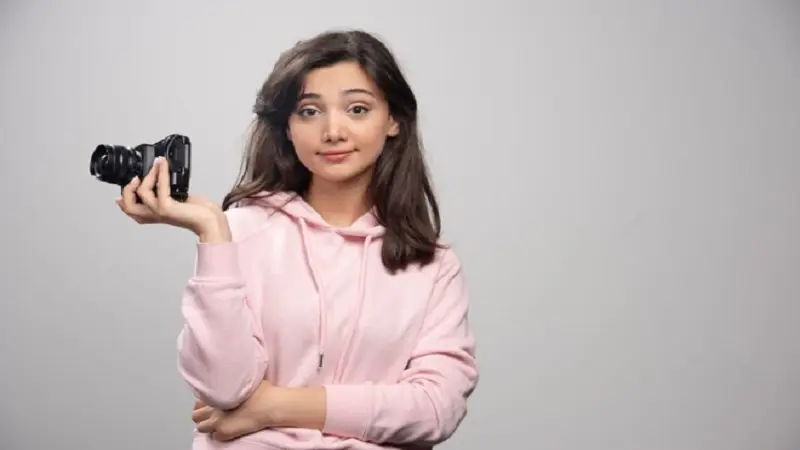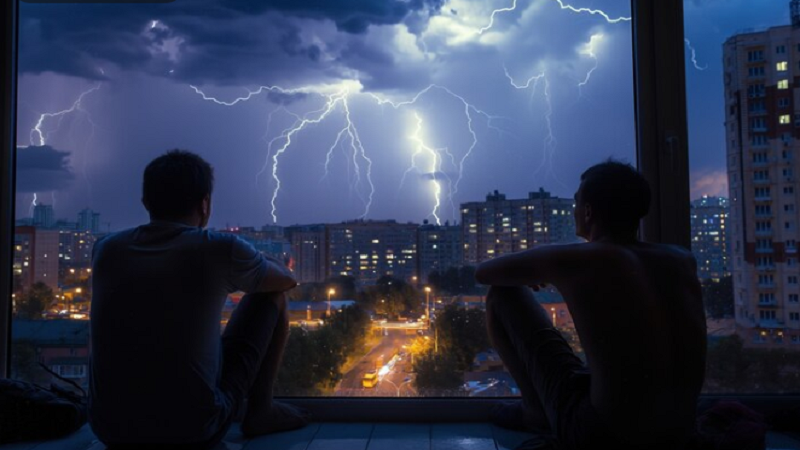Photography is an art that blends technical prowess with creative vision. One of the most cherished techniques among photographers, both amateur and professional, is bokeh. The word “bokeh” comes from the Japanese term “boke,” meaning “blur” or “haze.” Bokeh refers to the aesthetic quality of the out-of-focus areas in a photograph, typically found in the background. This technique can turn ordinary images into extraordinary works of art by creating a dreamy, ethereal effect that draws attention to the subject. In this article, we’ll explore the concept of “Photeeq Bokeh,” a term that embodies the mastery of bokeh in photography, and delve into how you can achieve this beautiful effect in your images.
What Is Photeeq Bokeh?
Photeeq Bokeh is more than just a technical term; it’s a philosophy and approach to photography that emphasizes the importance of bokeh in creating visually stunning images. The term “Photeeq” suggests a level of expertise and finesse in capturing photographs, while “Bokeh” represents the signature blurred background effect that adds depth and emotion to images.
In essence, Photeeq Bokeh is the art of using bokeh intentionally to enhance the mood and focus of a photograph. It’s about understanding how different lenses, aperture settings, and lighting conditions work together to produce that coveted creamy, out-of-focus background that makes the subject pop.
The Science Behind Bokeh
To truly master Photeeq Bokeh, it’s essential to understand the science behind it. Bokeh is created when parts of an image are deliberately kept out of focus. This is achieved by using a wide aperture setting on your camera lens, which results in a shallow depth of field. The depth of field is the distance between the nearest and farthest objects in a scene that appear acceptably sharp. When the depth of field is shallow, only a small portion of the image is in focus, and the rest becomes beautifully blurred.
The quality of bokeh is influenced by several factors:
- Aperture Size: The aperture is the opening in a camera lens through which light passes to enter the camera body. The size of the aperture is measured in f-stops. A lower f-stop number (e.g., f/1.4 or f/2.8) means a wider aperture, which allows more light to enter the lens and creates a shallower depth of field. This results in a more pronounced bokeh effect Photeeq Lens Flare
. - Lens Design: The design of the lens, including the number of aperture blades and their shape, affects the appearance of bokeh. Lenses with more aperture blades tend to produce smoother, rounder bokeh, while lenses with fewer blades may create a more polygonal bokeh shape Photeeq Lens Flare
. - Distance: The distance between the subject, the background, and the camera also plays a significant role. The greater the distance between the subject and the background, the more pronounced the bokeh effect will be. Photeeq Wildlife Photography
- Focal Length: Lenses with longer focal lengths (e.g., 85mm, 135mm) tend to produce more dramatic bokeh. These lenses compress the background, making the out-of-focus areas appear even more blurred. Photeeq Lens Flare
How to Achieve Photeeq Bokeh in Your Photography
Now that you understand the science behind bokeh, let’s explore how you can achieve Photeeq Bokeh in your photography. Whether you’re using a DSLR, mirrorless camera, or even a smartphone, these tips will help you create stunning bokeh effects. Photeeq Lens Flare
1. Choose the Right Lens
The lens you use has a significant impact on the quality of bokeh. Prime lenses with wide maximum apertures, such as 50mm f/1.8 or 85mm f/1.4, are excellent choices for creating bokeh. These lenses allow you to shoot with a shallow depth of field, which enhances the blurring effect in the background.
Telephoto lenses, like a 70-200mm f/2.8, are also great for producing beautiful bokeh. The longer focal length compresses the background, making it appear softer and more out of focus. Photeeq Wildlife Photography
2. Set a Wide Aperture
To achieve Photeeq Bokeh, you’ll need to use a wide aperture setting on your lens. Start with an aperture of f/2.8 or wider (e.g., f/1.8 or f/1.4) to create a shallow depth of field. The wider the aperture, the more pronounced the bokeh effect will be.
Keep in mind that shooting at such wide apertures requires careful focusing, as the depth of field is very shallow. Ensure that your subject’s eyes or the main point of interest are in sharp focus.
3. Position Your Subject Strategically
The placement of your subject about the background is crucial for creating effective bokeh. To maximize the bokeh effect, position your subject several feet in front of the background. The greater the distance between the subject and the background, the more blurred the background will appear.
For example, if you’re photographing a portrait, place your subject in front of a background with interesting textures or lights, such as trees, fairy lights, or a cityscape. This will enhance the bokeh effect and add a magical quality to the image Photeeq Wildlife Photography
.
4. Use Lighting to Your Advantage
Lighting plays a significant role in creating Photeeq Bokeh. Natural light, especially during the golden hour (shortly after sunrise or before sunset), is ideal for achieving soft, warm bokeh. The low angle of the sun during this time creates long shadows and highlights, which can enhance the bokeh effect.
Artificial lights, such as fairy lights or street lamps, can also be used to create bokeh. Position these lights in the background of your shot, and use a wide aperture to blur them into beautiful, glowing circles.
5. Experiment with Composition
Composition is key to creating visually appealing images with bokeh. Consider the rule of thirds, leading lines, and other compositional techniques to guide the viewer’s eye to the subject while allowing the bokeh to add depth and dimension to the scene.
For instance, placing your subject off-center and using bokeh to fill the negative space can create a more dynamic and engaging composition. Additionally, framing your subject with foreground elements that also exhibit bokeh can add layers to your image, making it more visually interesting Photeeq Wildlife Photography
.
6. Edit with Care
Post-processing can enhance the bokeh effect and overall mood of your image. Use editing software like Adobe Lightroom or Photoshop to fine-tune the exposure, contrast, and colors in your photo. You can also adjust the sharpness of your subject to make it stand out even more against the soft background.
When editing, be mindful not to overdo it. The goal is to enhance the natural beauty of the bokeh, not to create an artificial look. Subtle adjustments often yield the best results.
Photeeq Bokeh in Different Photography Genres
Photeeq Bokeh is a versatile technique that can be applied across various photography genres. Here are a few examples of how bokeh can be used to elevate your images in different contexts.
Portrait Photography
In portrait photography, bokeh is often used to isolate the subject from the background, making them the clear focal point of the image. The soft, blurred background adds a sense of intimacy and warmth, which is perfect for capturing emotions and expressions.
For example, in a headshot, a creamy bokeh background can help emphasize the subject’s facial features, making the image more powerful and engaging. Similarly, in a full-body portrait, bokeh can create a sense of depth and place the subject in a context without distracting them.
Macro Photography
Macro photography involves capturing close-up images of small subjects, such as insects, flowers, or textures. Bokeh plays a significant role in macro photography by creating a smooth, blurred background that highlights the intricate details of the subject.
When photographing flowers, for example, you can use bokeh to create a dreamy, almost surreal atmosphere, where the petals seem to float against a soft, out-of-focus background. This effect can turn a simple flower into a work of art.
Landscape Photography
While bokeh is more commonly associated with portrait and macro photography, it can also be used creatively in landscape photography. By incorporating bokeh into your landscape shots, you can add a unique perspective and draw attention to specific elements in the scene.
For instance, you might focus on a single leaf or flower in the foreground, allowing the rest of the landscape to blur into a soft, ethereal backdrop. This technique can create a sense of depth and dimension, making your landscape images more dynamic.
Night Photography
Night photography is another genre where bokeh can shine. The city lights, neon signs, and illuminated buildings create perfect opportunities for bokeh effects. By using a wide aperture and focusing on a nearby subject, you can turn the distant lights into beautiful, glowing orbs of color.
This technique is particularly effective for street photography, where bokeh can add a sense of mystery and ambiance to the scene. Whether you’re capturing a portrait in the city at night or a close-up of a neon sign, bokeh can enhance the mood and make your night shots more captivating.
Conclusion: Mastering Photeeq Bokeh
Photeeq Bokeh is more than just a technique; it’s an artistic approach to photography that can transform ordinary images into extraordinary ones. By understanding the science behind bokeh and applying the tips and techniques outlined in this article, you can start creating stunning photographs with beautiful, dreamy backgrounds.
Whether you’re capturing portraits, macro shots, landscapes, or night scenes, bokeh can add a touch of magic to your images, making them more engaging and visually appealing. So grab your camera, experiment with different settings and compositions, and unlock the power of Photeeq Bokeh to take




